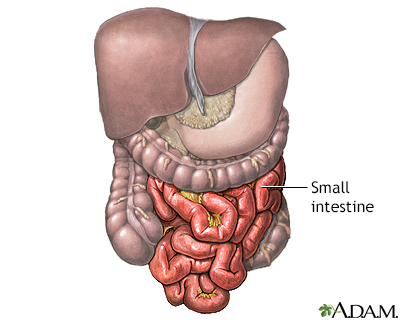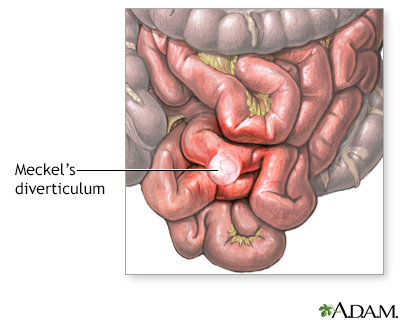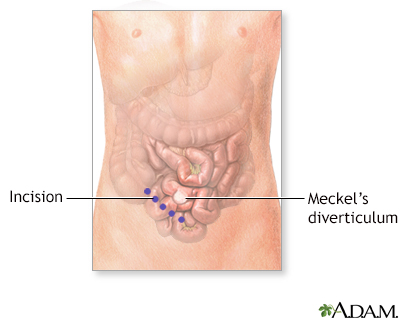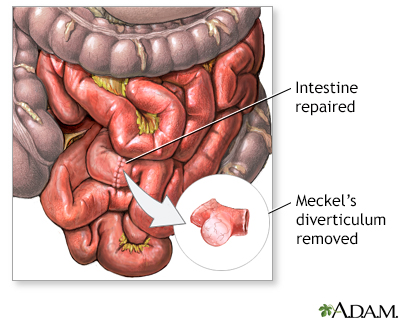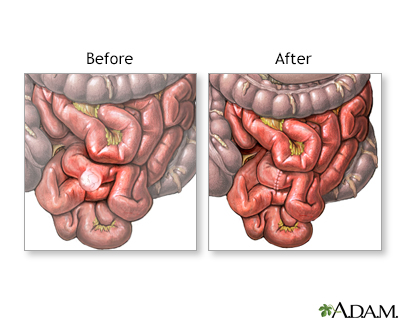Meckel's diverticulectomy
Normal anatomy
|
|
The small intestine is the longest portion of the digestive tract. It runs from the stomach to the colon.
|
Indications
|
|
Meckel's diverticulum is one of the most common congenital abnormalities. It occurs when the connection between the intestine and the umbilical cord doesn't completely close off during fetal development. This results in a small outpouching of the small intestine, know as a Meckel's diverticulum.
In most cases, Meckel's diverticula do not cause any problems. In a small number of patients however, these diverticula can become infected (diverticulitis) cause an obstruction of the intestine, or cause bleeding from the intestine. The most common symptom of Meckel's diverticulitis is painless bleeding from the rectum. The stools may contain fresh blood or may look black and tarry. Diverticulitis, or infection, of a Meckel's diverticulum is often mistaken for appendicitis.
|
Incision
|
|
Treatment of a Meckel's diverticulum involves resection of the involved portion of the small intestine. Often, symptoms from a Meckel's diverticulum are thought to be due to appendicitis and the Meckel's diverticulum is discovered only after the operation has begun. While the patient is deep asleep and pain-free (general anesthesia), an incision is made in the right side of the lower abdomen.
|
Procedure
|
|
The small intestine is found and the Meckel's diverticulum is removed. The intestine is repaired and the incision is closed.
|
Aftercare
|
|
Intravenous fluids will be given until the patient is able to eat by mouth (after bowel sounds are heard). A nasogastric tube may be in place to empty the stomach. Antibiotics may be given to prevent or treat infection. Discharge from the hospital can be expected within a week after surgery, barring complications.
|

Review Date:11/2/2022
Reviewed By:Michael M. Phillips, MD, Emeritus Professor of Medicine, The George Washington University School of Medicine, Washington, DC. Also reviewed by David C. Dugdale, MD, Medical Director, Brenda Conaway, Editorial Director, and the A.D.A.M. Editorial team.
The information provided herein should not be used during any medical emergency
or for the diagnosis or treatment of any medical condition. A licensed medical professional
should be consulted for diagnosis and treatment of any and all medical conditions. Call 911
for all medical emergencies. Links to other sites are provided for information only -- they
do not constitute endorsements of those other sites. © 1997-A.D.A.M., Inc. Any duplication or distribution of the information contained herein is strictly prohibited.
The Agency for Health Care Administration (Agency) and this website do not claim the information on, or referred to by, this site is error free. This site may include links to websites of other government agencies or private groups. Our Agency and this website do not control such sites and are not responsible for their content. Reference to or links to any other group, product, service, or information does not mean our Agency or this website approves of that group, product, service, or information.
Additionally, while health information provided through this website may be a valuable resource for the public, it is not designed to offer medical advice. Talk with your doctor about medical care questions you may have.

